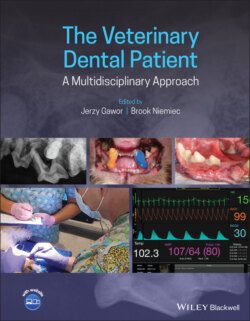Читать книгу The Veterinary Dental Patient: A Multidisciplinary Approach - Группа авторов - Страница 57
3.9 Veterinary Dental Education in the Future
ОглавлениеTo respond properly to the needs of all patients suffering from oral diseases, meet market expectations, and follow ongoing trends in veterinary business, a new veterinary dental education system must be implemented. The key points of the WSAVA chapter dedicated to education are worth citation here (Niemiec et al. 2017):
Figure 3.5 WSAVA Dental guidelines team From left: Paulo Stegall DACVAA (Canada), Jerzy Gawor DAVDC, DEVDC, FAVD (Poland), Brook A. Niemiec DAVDC, DEVDC, FAVD (USA), Kymberley Stewart (Canada) Gottfried Morgenegg (Switzerland), Marge Chandler DACVN, DACVIM, DECVIM‐CA (UK), Rod Jouppi (Canada), Ana Nemec DAVDC, DEVDC (Slovenia), Cedric Tutt, DEVDC (South Africa), David Clarke DAVDC (Australia).
Veterinary dentistry is a largely neglected field in the veterinary medicine curriculum in most of the universities.
Teaching veterinary dentistry at an undergraduate level should include lectures and hands‐on workshops on basic examination techniques, most common oral/dental diseases and treatments.
Teaching hospitals should establish a veterinary dentistry department, striving at providing dentistry services at a specialist level to create the necessary teaching environment.
Postgraduate training in veterinary dentistry should include residency training, ideally in the future combined with PhD training.
Effective teaching of veterinary dentistry in the veterinary school is the key to progression in this field of veterinary medicine.
